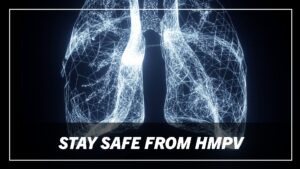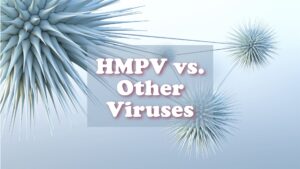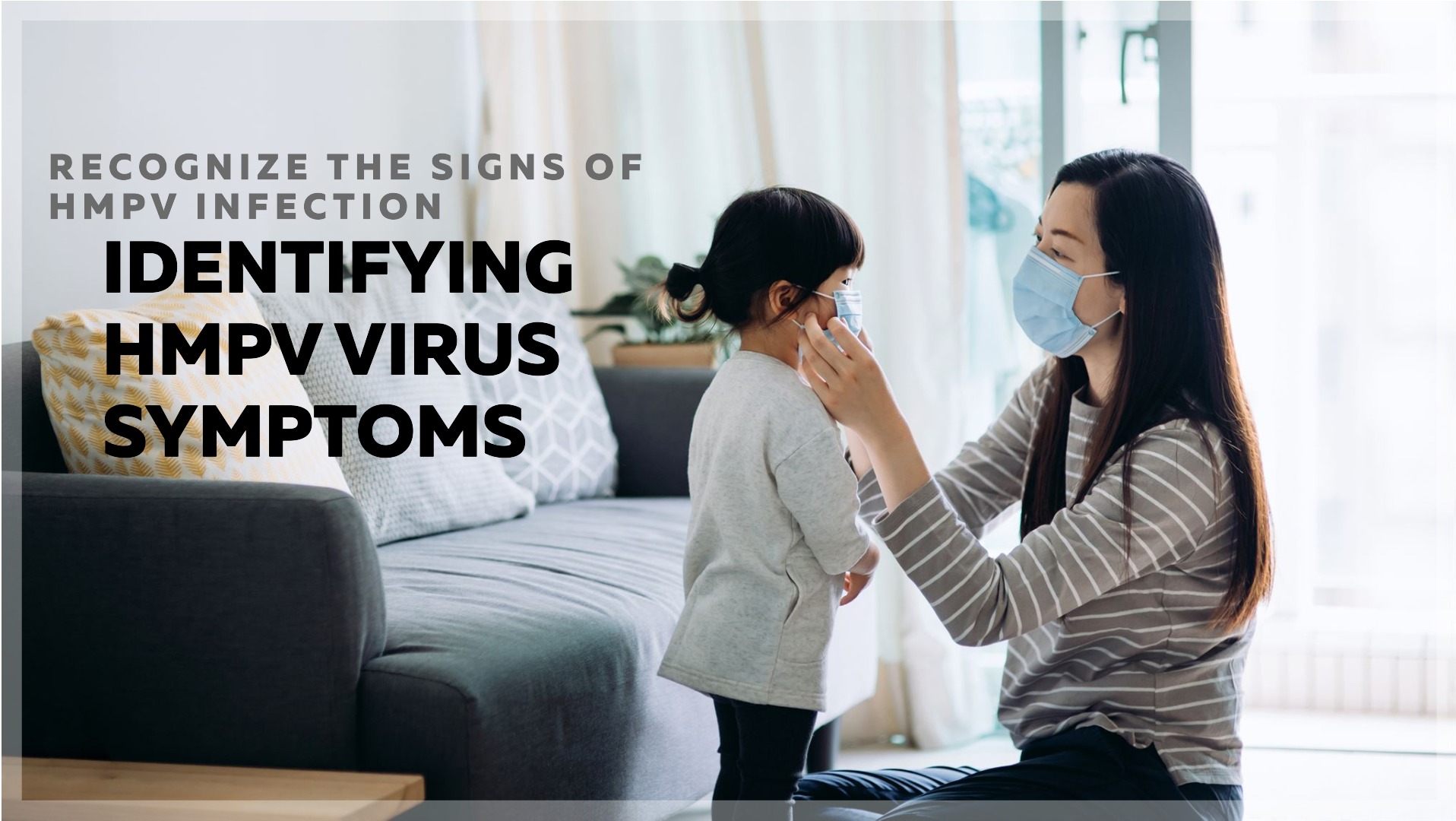Human Metapneumovirus (HMPV) is a respiratory virus that affects people of all ages. Since its discovery in 2001, HMPV has been identified as a significant cause of respiratory infections, particularly in young children, older adults, and individuals with weakened immune systems. Understanding the symptoms of this virus is crucial for early diagnosis and proper management. In this blog, we will explore how to identify HMPV virus symptoms, its transmission, and potential treatment options.
What is HMPV?
Human Metapneumovirus belongs to the Paramyxoviridae family, which includes other respiratory pathogens like Respiratory Syncytial Virus (RSV). It primarily causes respiratory tract infections, ranging from mild cold-like symptoms to severe respiratory illnesses, such as bronchiolitis or pneumonia. HMPV circulates globally and is particularly active during late winter and early spring.
Who is Most at Risk?
While anyone can contract HMPV, certain groups are at a higher risk of severe illness:
- Infants and young children: Their developing immune systems make them more vulnerable.
- Older adults: Age-related immune decline increases susceptibility.
- People with compromised immune systems: This includes individuals undergoing chemotherapy, organ transplant recipients, or those with chronic illnesses like diabetes or heart disease.
- Individuals with chronic respiratory conditions: Asthma and Chronic Obstructive Pulmonary Disease (COPD) can worsen symptoms.
Common Symptoms of HMPV
HMPV symptoms often resemble those of other respiratory infections, making it challenging to distinguish without laboratory testing. However, the following signs can indicate HMPV infection:

1. Mild Symptoms
For most healthy individuals, HMPV presents with mild, cold-like symptoms such as:
- Runny or stuffy nose: Nasal congestion is one of the earliest signs.
- Cough: Often dry initially, it may progress to a more productive cough.
- Sore throat: Irritation or discomfort in the throat is common.
- Fever: Low-grade fever may accompany other symptoms.
- Fatigue: A general feeling of tiredness or lethargy.
2. Moderate Symptoms
In some cases, the symptoms may be more pronounced, including:
- Persistent coughing: A cough that lingers and worsens over time.
- Wheezing: Difficulty breathing accompanied by a high-pitched whistling sound.
- Shortness of breath: Feeling out of breath, especially during physical activity.
- Muscle aches: Generalized body pain and discomfort.
3. Severe Symptoms
Severe HMPV infections often occur in high-risk individuals and may require hospitalization. Symptoms include:
- High fever: A persistent fever above 102°F (39°C).
- Severe shortness of breath: Difficulty breathing even at rest.
- Cyanosis: Bluish discoloration of the lips, skin, or nails due to low oxygen levels.
- Rapid breathing: Increased respiratory rate as the body struggles to get oxygen.
- Dehydration: Signs include dry mouth, reduced urine output, and dizziness.
How is HMPV Transmitted?
HMPV spreads primarily through respiratory droplets when an infected person coughs, sneezes, or talks. It can also be transmitted by touching contaminated surfaces and then touching the mouth, nose, or eyes. The virus is highly contagious, especially in crowded settings such as schools, daycare centers, and nursing homes.
When to Seek Medical Attention
While mild symptoms of HMPV can often be managed at home, medical attention is necessary in the following situations:
- Persistent high fever that does not respond to over-the-counter medication.
- Difficulty breathing or rapid breathing.
- Symptoms that worsen after initial improvement.
- Signs of dehydration, such as dry mouth, extreme thirst, or reduced urine output.
- In infants: Poor feeding, lethargy, or irritability.
Also Read: Health care jobs are booming in 2025
Diagnosis of HMPV
Doctors may diagnose HMPV based on clinical symptoms and patient history. However, laboratory tests are often needed for confirmation, especially in severe cases. Common diagnostic methods include:
- Polymerase Chain Reaction (PCR): Detects HMPV genetic material in respiratory samples.
- Rapid antigen tests: Identify viral proteins in nasal or throat swabs.
- Chest X-rays: Used to assess lung involvement in severe cases.
Treatment Options
Currently, there is no specific antiviral medication for HMPV. Treatment focuses on relieving symptoms and supporting the body’s immune response:
- Over-the-counter medications: Acetaminophen or ibuprofen for fever and pain relief.
- Hydration: Drinking plenty of fluids to prevent dehydration.
- Rest: Adequate rest to help the body recover.
- Humidifiers: Using a humidifier can ease breathing and relieve nasal congestion.
In severe cases, hospitalization may be required for oxygen therapy, intravenous fluids, or mechanical ventilation.
Prevention Tips
Preventing HMPV infection involves the same strategies used for other respiratory viruses:
- Hand hygiene: Wash hands frequently with soap and water for at least 20 seconds.
- Avoid close contact: Stay away from individuals showing symptoms of respiratory infections.
- Disinfect surfaces: Regularly clean commonly touched objects and surfaces.
- Use masks: In crowded or high-risk settings, wearing a mask can reduce the risk of transmission.
- Stay home when sick: Prevent spreading the virus to others by staying home if you’re feeling unwell.
- Boost immunity: Maintain a healthy diet, exercise regularly, and get enough sleep to support your immune system.
HMPV vs. Other Respiratory Viruses
HMPV symptoms often overlap with those of other respiratory viruses like RSV, influenza, or the common cold. However, certain distinctions can help:

- RSV: More likely to cause bronchiolitis and wheezing in young children.
- Influenza: Typically involves sudden onset of high fever, chills, and body aches.
- Common cold: Symptoms are usually mild and limited to the upper respiratory tract.
Conclusion
Recognizing the symptoms of Human Metapneumovirus (HMPV) is essential for timely intervention, especially for high-risk groups. While most cases resolve on their own, severe infections can pose significant health risks. By practicing good hygiene, staying vigilant, and seeking medical care when necessary, you can protect yourself and others from this contagious virus. If you or a loved one experience severe symptoms, consult a healthcare professional promptly for appropriate care and management.

